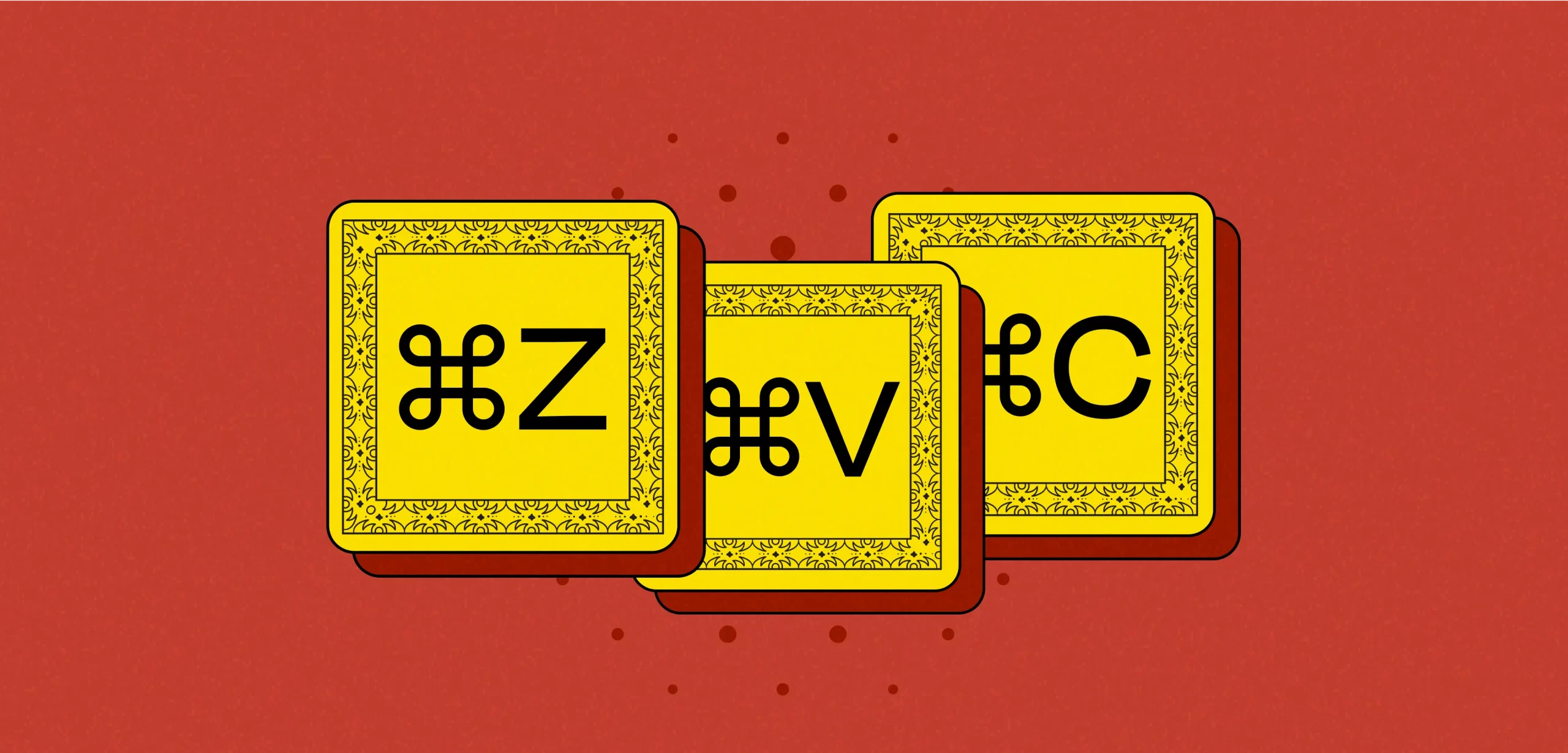Imagine a world where Ctrl/Cmd + Z didn’t let you recover critical sentences after you deleted them accidentally from a super important pitch for a super important client (The forces of the universe never stop to conspire).
A world where Ctrl/Cmd + A didn’t offer the simple luxury of selecting massive blocks of text on some 39 pages of your research proposal on Google Docs. A world without command + tab, and thus, without the ease with which you switched applications on the desktop, without even realising.
In this world, your productivity would drastically decrease. Simple tasks like undoing a typo would require you to go through an infinitely long version history to find and manually fix the mistake. Selecting and formatting large chunks of text would become tedious and time-consuming. Every selection would require painstaking manual effort and multitasking would be deemed impossible. Can you imagine the horror?
Thankfully, we don’t have to live in this world.
The realm of keyboard shortcuts, often taken for granted, has a rich history and a profound impact on our digital lives. In this blog, we’ll delve into key events that led to the evolution of these shortcuts, from their humble beginnings to their pivotal role in today’s digital landscape.
It all started some 150 years ago…
The first-ever shortcut key came on a typewriter from 1878—The Remington No.2. It featured a shift key for lowercase and uppercase switching.
Before then, the early versions of Remington had a locking mechanism to switch to uppercase or lowercase mode. That means, before 1878, anytime you had to capitalize a title or write a simple ‘I’, you would have to physically push down or lift the lever to lock any of the modes.

Remington had no idea including a simple shortcut key to convert the case would prove incredibly useful for the entire world. A tiny innovation paved the way for something relevant even a century and a half later.

Let’s take a dive into the three of the most critical shortcuts to ever exist:
1. Cut, Copy, Paste: A Stroke of Genius
Fast-forward to the 1970s, the computing landscape was on the cusp of a revolution. Larry Tesler, a visionary computer scientist, had joined the Xerox Alto team at the Xerox Palo Alto Research Center. He worked on significant projects like the Gypsy word processor and Smalltalk programming language. Teaming up with his colleague Tim Mott, Tesler began shaping ideas for the future of interactive computing while working on Gypsy. They envisioned a transition from text-based interfaces to graphical user interfaces (GUIs). This led to the birth of what would become three of the most invaluable shortcuts in modern computing: Cut, Copy, and Paste.
His concept would influence the development of text editors and entire computer operating systems globally, making our workdays easier.
2. Undo: A Masterstroke in Making
The File Retrieval and Editing System, developed at Brown University, pioneered the “undo” feature across a computer system for the first time in 1968. It was a word processor mainly used for educational purposes, such as typesetting books and research papers.
Two years later, Warren Teitelman developed the Progammer’s Assistant as part of BBN-LISP, a programming language. This system included a primitive form of the Undo feature.
Following suit, the folks at Xerox PARC Research Centre assigned the keys, Ctrl + Z, to the Undo command. They probably chose Z because it’s very close to the command/control key on the QWERTY keyboard.
This seemingly modest pair of keys offered a powerful tool that would become a staple in almost every digital interface. Soon after, computer engineers Larry Tesler and Bill Atkinson would insist on including the command for Apple’s Lisa, the predecessor to their famed Macintosh.

FRESS hypertext editing system demonstrated at Brown University in 2019 by David Durand
3. The Queen Bee: Control-Alt-Delete
The queen bee of shortcuts, Control-Alt-Delete, was born out of a different need, thanks to IBM engineer David Bradley.
In a stroke of ingenuity, Bradley came up with the shortcut when he was trying to restart the machine he had been working on with his team—the iconic IBM Acorn PC. They had tried plugging and unplugging the machine as a tried and tested method but to no avail. Bradley’s little impromptu innovation would go on to become a cornerstone of computing history, serving as the ultimate reboot shortcut for programmers. Yes, this infamous trio of shortcut combinations was originally meant for developers, not end-users.
During a panel with Bill Gates at The Tech Museum on August 8, 2001, Bradley said, “I may have invented Control-Alt-Delete, but I think Bill made it famous.”

On an unrelated, happy trivia note 🍎
Prior to the release of the original Mac, Steve Jobs voiced concerns about the overuse of the iconic “Apple” logo.
As a result, the project team decided to use a ‘looped square’ sign, which, in Nordic countries like Finland and Norway, is used to mark culturally significant sites. This shift highlighted the attention to detail that goes into every aspect of computing, even down to the symbols that guide our interactions.

To introduce shortcuts today, you need to account for the following MUST-HAVE factors:
1. Make shortcuts easily memorable: Users should find it easy to commit these shortcuts to memory, allowing them to seamlessly integrate them into their daily tasks.
2. Ensure their compatibility with existing keyboards: New shortcuts must align with the physical arrangement of keys on various keyboard types, whether they’re standard, ergonomic, or compact. For instance, the shortcut “Ctrl + C” for copying should be universally recognized and accessible on all keyboard layouts. If you’re designing for a particular keyboard, you are missing out on the rest!
3. Create key sequences that don’t trigger other shortcuts: Developers must meticulously design key combinations that do not inadvertently trigger other commands or functions, preventing user frustration and mishaps. Example: the key sequence “Ctrl + S” for saving a file should not also activate the “Ctrl + Shift + S” shortcut for saving a file with a different name.
You will be adding more to your users’ plate with these keys, than they can possibly consume.
Modern applications like Figma, Notion, and Superhuman take this philosophy to heart, encouraging users to embrace the keyboard and bid adieu to the mouse for enhanced productivity.

There you have it — our short encapsulation of the history and significance of keyboard shortcuts. These shortcuts have shaped the way we work and have become an integral part of our digital lives. And we wouldn’t have it any other way!


